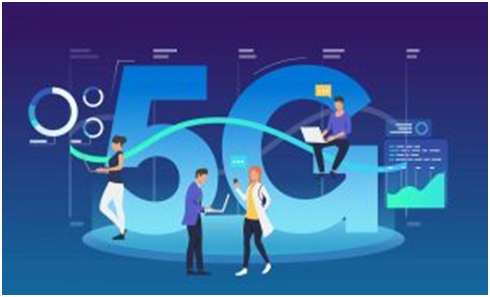
Urgency 5G Network For Indonesia
Community activities that are all digital have led to a
significant increase in data traffic. The utilization of the 4G network in
densely populated and industrial areas is relatively high, resulting in a
decrease in data access speed and disrupting user activities.
New technology is needed to overcome this, one of which is the
5G network. There are many advantages of this technology, one of which is the
speed of data access, making users more comfortable in the digital world.
5G technology offers access speeds up to above 1 Gbps (gigabytes
per second) to provide a perfect video viewing experience. It can make the
online teaching and learning process more enjoyable; students stare at the
device’s screen and seem to be in an actual room through virtual reality or
virtual reality.
5G services will be more stable with the support of fiber optic
networks, provided by PT Alita Praya Mitra for cellular operator Indosat
Ooredoo in Solo, which launched recently.
The characteristics of 5G that move in large bandwidth make this
technology capable of supporting millions of devices to encourage more smart
cities in Indonesia by utilizing Internet of Things (IoT) solutions.
Millions of sensors and devices connected to the internet, such
as smart lights, surveillance cameras, warning systems for disasters such as
floods and earthquakes, to air quality in a city can operate simultaneously via
the 5G network. This condition cannot use 4G networks, which have a narrower
bandwidth.
5G also has low latency, under one millisecond, making vehicle
automation to remote operation in the healthcare industry very possible in the
future. These advantages predicted will increase economic value, a combination
of increased efficiency and effectiveness.
As for IoT, the 5G network supports standalone networks. A
congested city or an industrial area looking to take the digital leap will
benefit from the 5G network.
In the Virtual Lunch and Learn ICT Trends 2021 – 2024 event
supported by the Indonesian Internet of Things Association (ASIOTI) last week,
President Director of PT Alita Praya Mitra Teguh Prasetya said that from the
infrastructure side, 5G was present in several releases. Each release brings
its advantages.
As noted, 5G was introduced by telecom operators some time ago,
is 5G release 15 Globally, release 15 has been introducing by 3GPP in 2020
-2021.
Release 15 offers 5G with superior data service speeds, so users
can download or upload data, with speeds 5 – 20 times faster than 4G.
After 2021, we estimated that there would be 16 releases, which
bring many advantages, especially for IoT devices due to low latency, slicing,
unlicensed frequencies, massive connectivity, etc.
Teguh said that release 16 would likely be known as 5.2G. Then
2022 -2023 comes release 17 with the term 5.3G. Then after 2024, it will
release 18 -19 with 5.5G. After the release of 20 will appear 6G. 3GPP
estimates that 6G will arrive by 2030 at the latest.
“This is what will happen. 5G will also change to 6G. There are
four more realists that will be introducing, and each has advantages,” said
Teguh.
According to the 5G Business Potential from Industry
Digitalization report, the digitalization of the industry through 5G allows
information and communication technology (ICT) players to have the opportunity
to earn US$619 billion in revenue by 2026.
There are three schemes of roles played by ICT players. Each
role has a different impact on their income. If ICT players only play the part
of network developers, the potential revenue earned in 2026 will reach US$204
billion.
Meanwhile, if ICT players choose to act as network developers
and service providers, the potential income is even higher, worth US$541
billion. Then if the operator is the creator of 5G services for the industry,
the potential revenue is USD 619 billion.
The potential revenue of US$619 billion comes from various
sectors with the breakdown of the manufacturing sector worth US$113 billion
(18%), the Energy and utilities sector worth US$101 billion (16%), the public
security sector worth US$78 billion (13%) and the health sector. US$76 billion
(12%).
Then the public
transportation sector valued at US$74 billion (12%), the media and
entertainment sector valued at US$62 billion (10%), the automotive sector
valued at US$48 billion (8%), the financial services sector valued at US$30
billion (5%). Retail valued at US$29 billion (5%), and the agriculture sector
valued at US$9 billion (1%).
TAGS:
#5g, #alitaprayamitra, #gobeyond, #technology